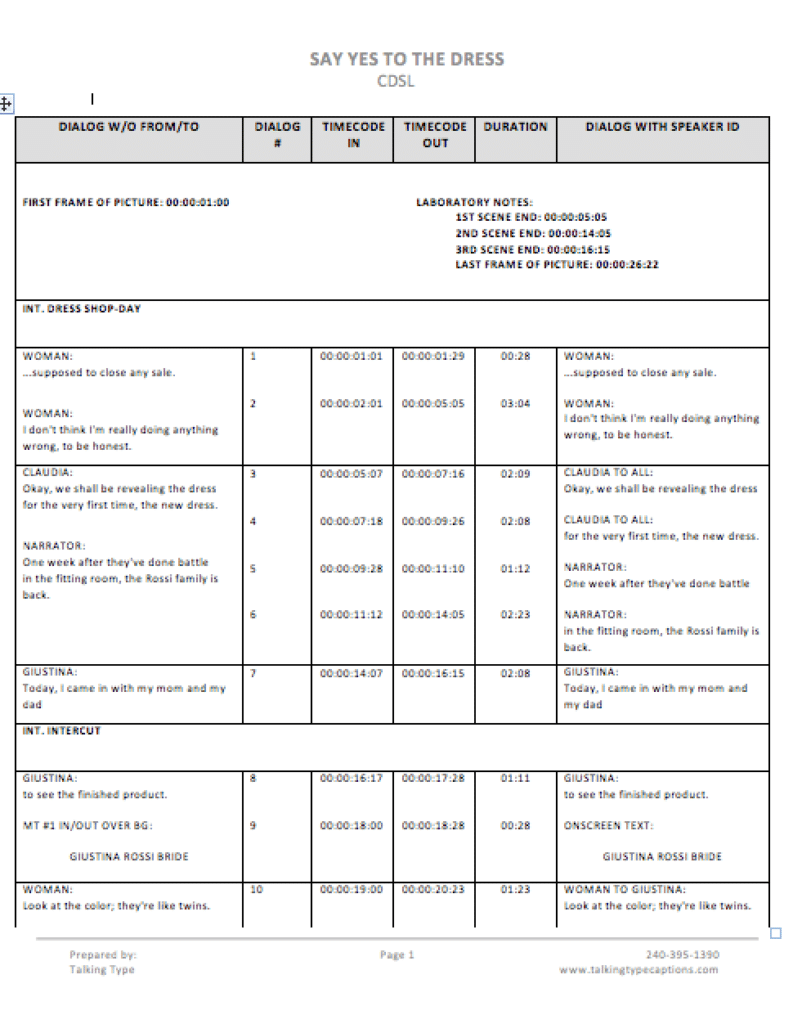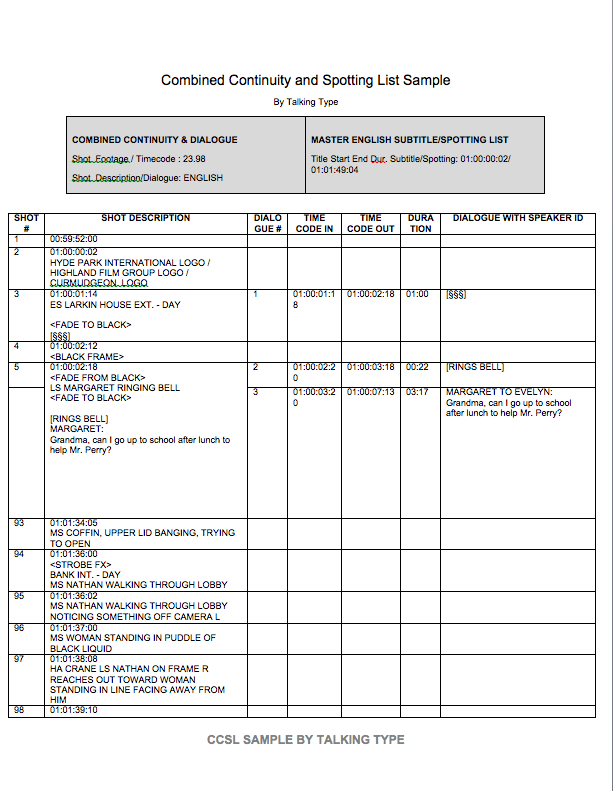
What is a CCSL
Film Script?
A Combined Continuity and Spotting List, also called CCSL in short, is a post production script of the final broadcast of a movie or television show in a written text form.
It’s a shot by shot description of the visual and audible content of the media.
Complete with the frame-precise time codes, visual description of the action on the screen, lower-thirds, graphics, forced narratives and dialogue, a Combined Continuity and Spotting List is a faithful rendition of the deliverable master video.
The Talking Type Advantage
At Talking Type, we’ve been creating CCSL Scripts for more than 19 years. Having gathered all this experience with virtually every network and film production companies and distributors, our post production lists are in a class all by themselves.
And are also very reasonably prices.
That’s the advantage of working with Talking Type – quick, accurate and affordable CCSL, As Broadcast Script and Dialogue Lists. Check out all our samples and prices.
How are
Visual Shots
Described
in a CCSL?
Scene Descriptions are written with the following elements in mind:
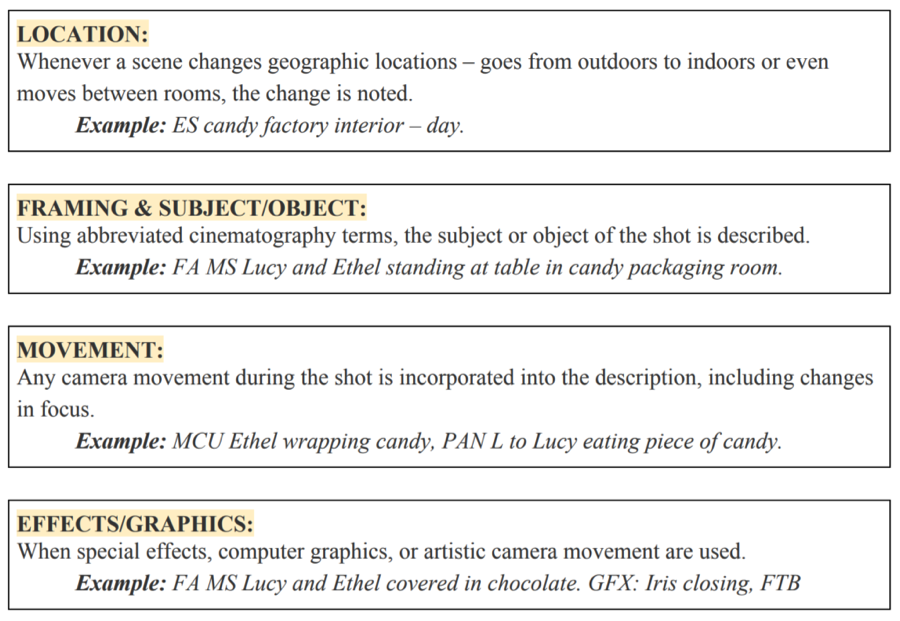
What is a
CCSL transcription used for?
Legal use
The CCSL serves as a paper form of the video content. When a production is distributed internationally, the CCSL serves as a guide that provides compliance (censorship) officers the information they need to conform the production to the legal standards of their region. It’s a necessary part of deliverables to networks or a studios and is an invaluable tool with reediting the content if needed for different market sensibilities.
Subtitling and Dubbing
Most helpful with subtitling and dubbing a video into foreign languages. Especially with annotated dialogues. Once the in-timecode and the out-timecode of a dialog have been captured on paper, the duration calculated, the voice-over for the dubber has a precise idea of the time that is available to fit in the dialog in the foreign language.
Why is it so labor intensive? Imagine writing down in great detail everything that you see on the screen, right down to camera angles, camera shots such as extreme close up, close up, mid shot, long shot, extreme long shot (click here to see the shot descriptions). And then also how the camera moves — pan, tilt, zoom-in, zoom-out which is followed with the description of the action on the screen. In short you are actually seeing the video on the paper instead of on the screen.
Luckily this is one of the few jobs that can only be done by a well-trained writer and not by any algorithm. Our writers have had years of experience with describing scenes that no software can do. A good writer can describe only about 5 – 7 minutes of video content in an hour.
CCSL Transcription
Workflow
1. Transcribing the dialogue.
2. Creating
a closed captioning file to get the in time and out time and duration
of the dialog. With proper tools it is much easier to capture the time
codes than type them by hand. One of the advantages is that our software automatically calculates the duration of the dialog.
3. Exporting the dialog, time in, time out and duration to an Excel document.
4. Now the fun begins. We add the IDs of the speakers to the dialog and note down who is talking to whom, with the nuances of the dialog (whispers, stammers etc).
5. Along with the dialog description, we add the visual data.
Post Production Script Samples
Simple CCSL Sample
Comprehensive CCSL Sample

A simpler version of a CCSL script has all the elements of a comprehensive CCSL except that the visual descriptions are succinct
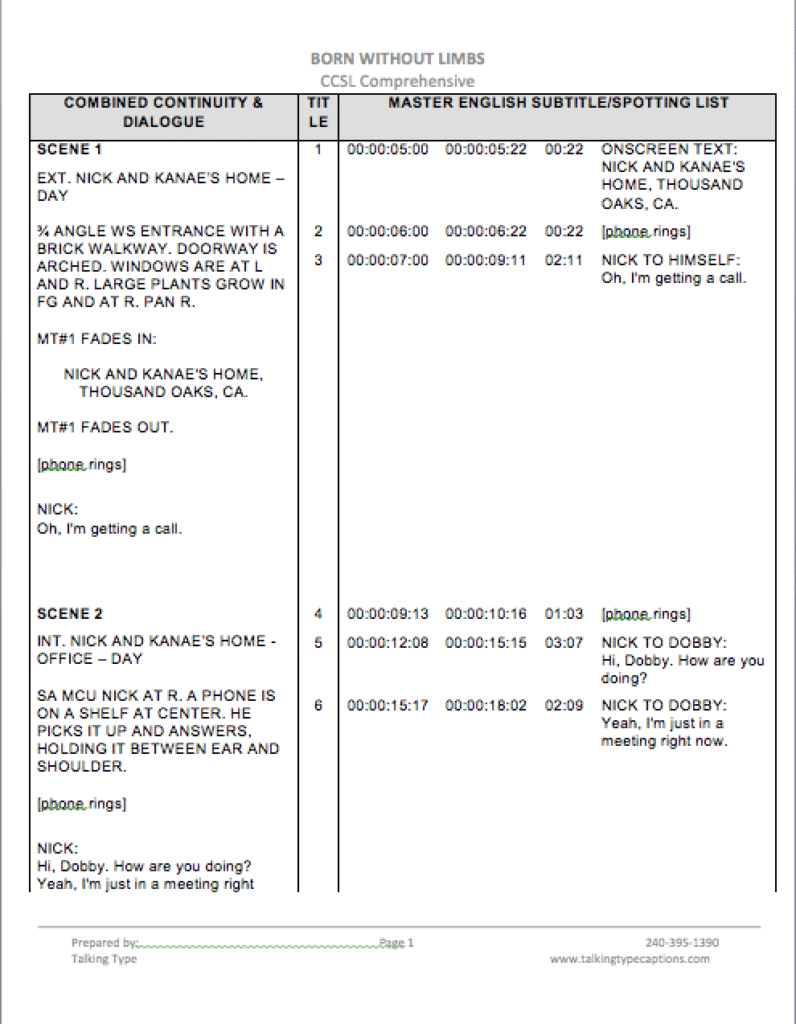
Comprehensive CCSL is a continuity script that is written in the similar way as its simpler version but it is more detail oriented with camera movement, placement and technical aspects of film production.
CCSL with dialogue annotations Sample
Continuity List Sample
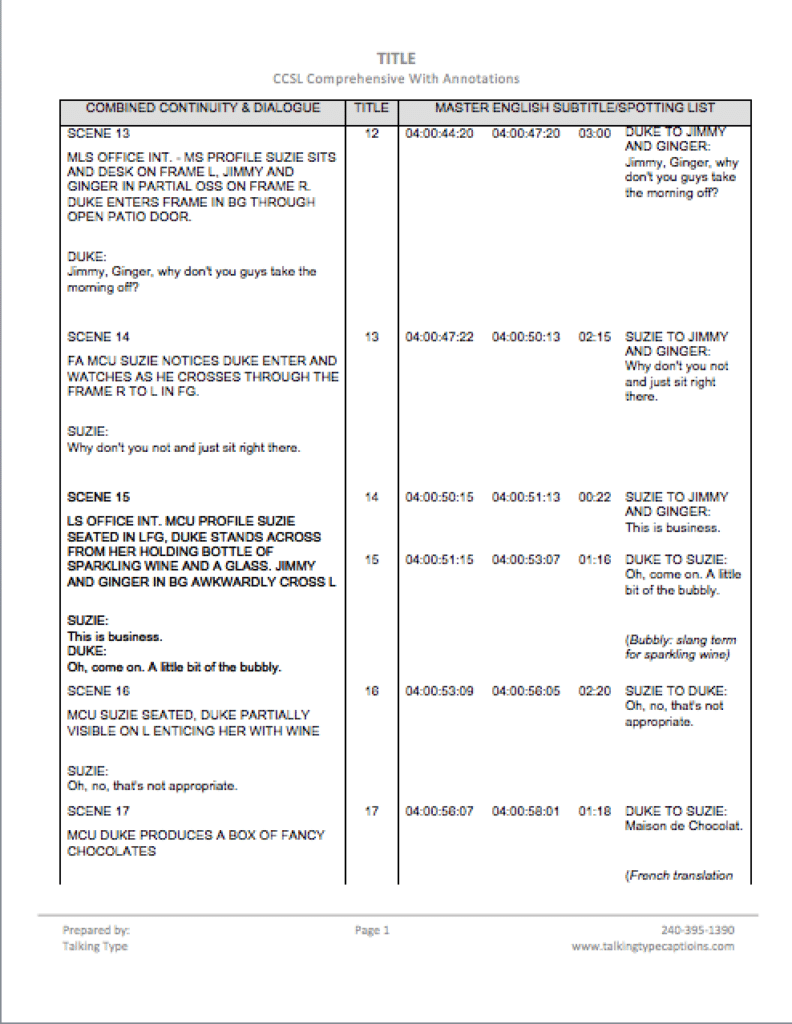
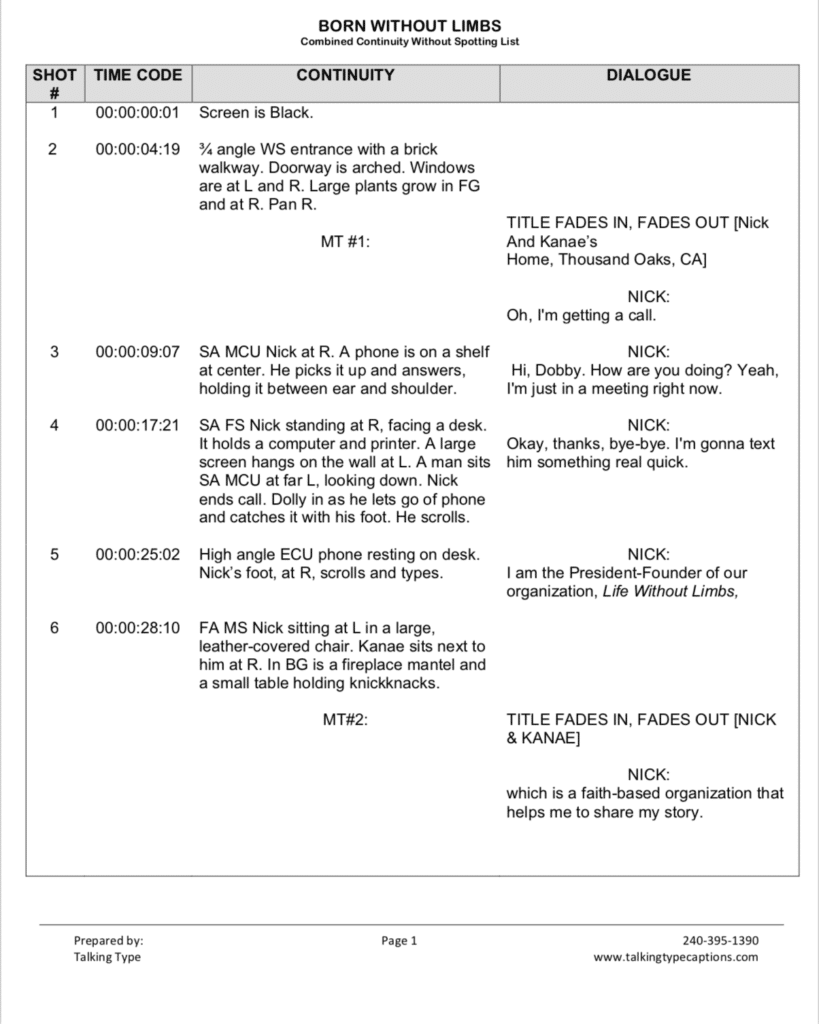
Check out all our post production list samples

What's the Difference between
CDSL and CCSL
continuity scripts?
